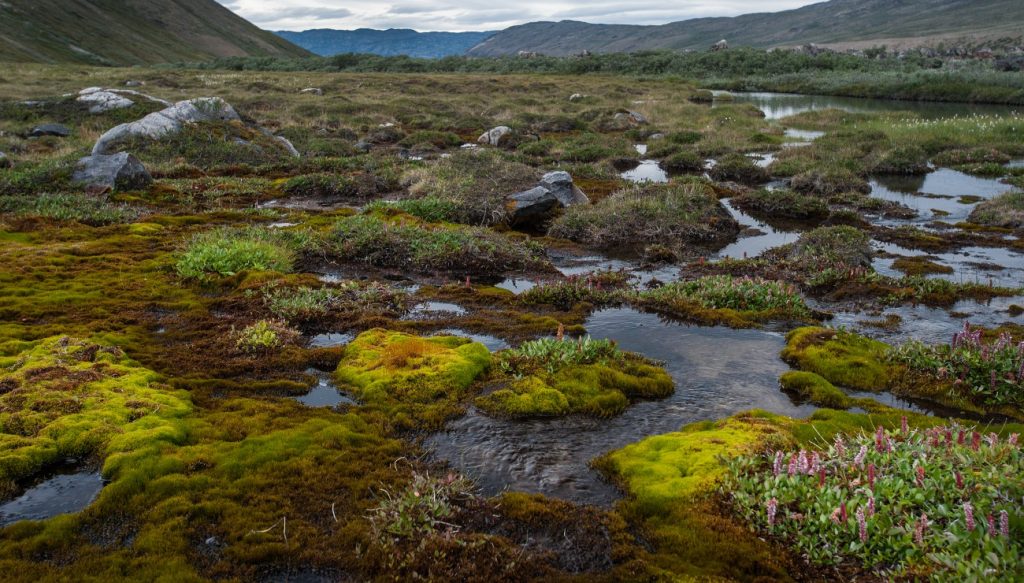
The carbon footprint of peatlands becomes clearer
Peatlands are true carbon sponges. It represents only 3% of the planet’s surface area, but contains between a quarter and a third of soil organic carbon. However, it also releases large amounts when dried to turn it into arable land. However, their role remains neglected in climate models. Chunjing Qiu, of the Laboratory of Climate and Environmental Sciences at the University of Paris-Sclay and colleagues now propose a preliminary estimate of these carbon emissions associated with the conversion of peatlands to farmland.
If peat cleans carbon very efficiently, it is due to its high humidity, low oxygen and high acidity, which prevents organic matter from completely decomposing. Dead plant remains accumulate in large quantities, with all carbon stored during their lifetime through photosynthesis. Then the last one is stored.
Unless the swamp dries up, for example due to fire or drainage. The peat then decomposes to release the carbon, and peatlands move from a basin to a carbon source, which emits heavily for the first seven years after it dries up, before slowly depleting.
This phenomenon, which is still poorly measured, is ignored in current models of global carbon emissions, due to the lack of sufficient data on the decomposition of peatlands converted into agricultural land. Chunjing Qiu and colleagues developed the first assessment of 12 countries with 90% of the peatlands in the northern hemisphere. They built a new model that reconstructs the expansion of cultivated areas since 850, setting several scenarios depending on whether or not these were former peatlands.
In the most optimistic scenario, the scarce farmland only comes from converting peatlands, while the worst case scenario is that a large number of it extends over the former peatlands. Once this area has been estimated over time, the researchers extrapolated the amount of carbon that intact peatlands have absorbed and have emitted during their transformation, over the past 1,150 years.
Converting peat bogs into agricultural areas was already a common practice in the Middle Ages and even earlier. The area of arable peatlands increased steadily up to a year eighteene century, before experiencing a rapid expansion to its peak in the middle of the last century. During this time, human activity has transformed these carbon sinks into net emitters: According to Chunjing Qiu and colleagues’ medium scenario, 72 billion tons of carbon were emitted in the Northern Hemisphere through these conversions. , of which 40 billion have been since 1750. In comparison, the natural mechanism of carbon uptake by intact peatlands has “only” captured 43 billion tons of carbon since ninthe century.
However, margins of error for these emissions remain quite wide: they can vary from single to double depending on the scenario considered to estimate the area of converted peatlands. It would be “difficult to reduce the uncertainty about the disappearing peatlands, except to use regional dates that are not necessarily representative,” notes Philip Ciais, a researcher at the CEA’s Laboratory of Climate and Environmental Sciences, who was involved in the study. “What is certain is that in Northern Europe, and for example in France, in Pas-de-Calais, much arable land was taken from peat bogs.”
In the meantime, these estimates give it first place by volume, and require a revision of the nearly 40 billion tons of carbon absorbed by the soil, which has so far been estimated at 220 billion tons over the period 1750-2018. But it also requires an upward revision of the carbon footprint of many human activities. Thus, the total carbon emissions associated with the transition and change in land use since 1750 should be reassessed at 100 billion tons, as opposed to 60 today. To incorporate peatlands as closely as possible into climate models, these numbers must be supplemented with similar estimates for the tropics. In these areas, fires and deforestation are unlikely to mitigate losses.

“Organizer. Social media geek. General communicator. Bacon scholar. Proud pop culture trailblazer.”
